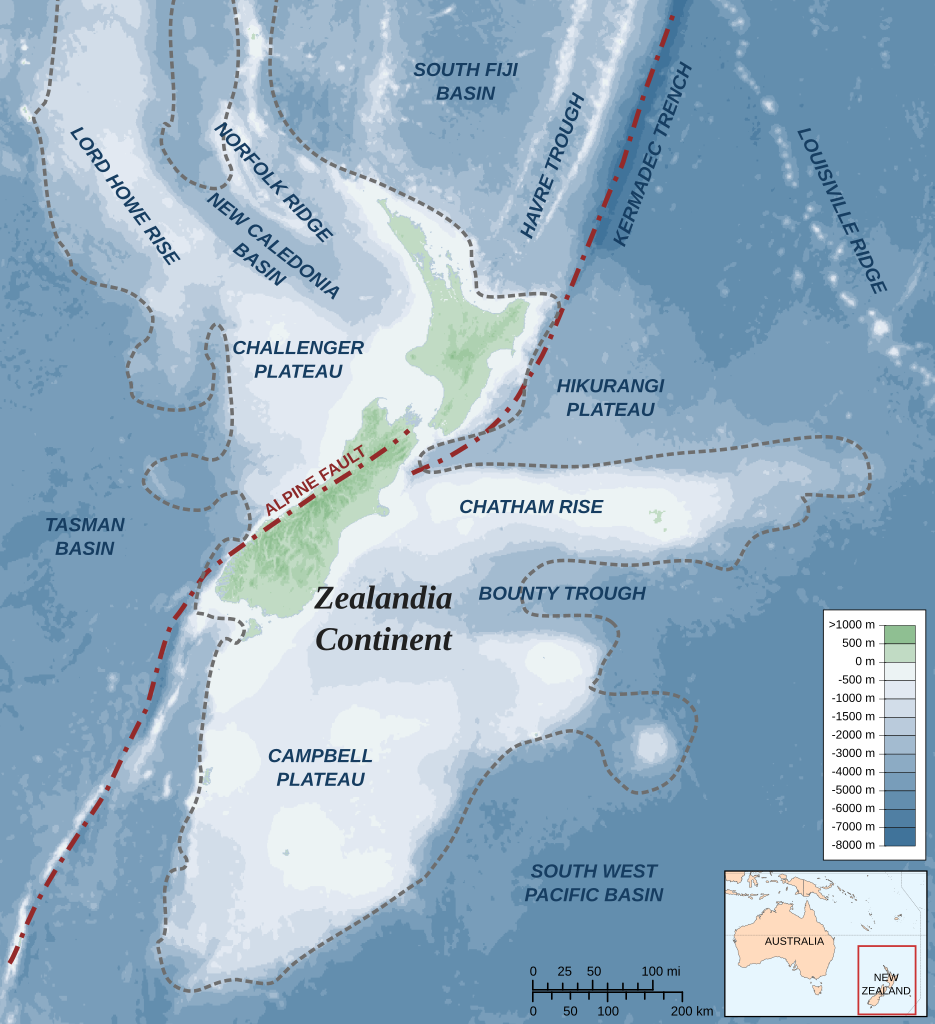I once featured a stretch of completely straight railroad track across the Nullarbor Plain. It ran an amazing 478 kilometres (297 miles), in Australia’s Longest Straight Line. I’ve also focused considerable attention on the Canada-United States border. That one hugs the 49th degree of latitude north for something like 2,000 km (1,250 mi) — although we know it’s really composed of hundreds of smaller segments. However, these very long, very straight lines come from the minds and hands of humans. What is the longest line on earth, I wondered, created completely by nature?
Let’s temper our expectations. Long straight lines don’t come easy in nature. Certainly, like the monkeys typing Shakespeare, it can happen. But I’m not searching for exactness. Approximately straight or straight-ish is good enough for me. Also, I’m also not the first person to ponder this question by any means. The Intertubes are full of different sites and forums where people ponder similar mysteries.
Local Geological Formation?

Lots of people see straight lines in local landmarks, often in the form of columnar basalt. This is an extrusive volcanic rock that forms as magma pushes to the surface. Impressive results appear throughout the world in many different locations.
The most well-known instance is quite possibly the Giant’s Causeway in County Antrim, in Northern Ireland (map). Now consider the image above and notice the people standing atop the formation. That will give an indication of scale. The stones align in a fairly straight set, albeit a little jagged along the edges.
But we can do better.
Waterfall?

With a waterfall, the notion focuses on a continuous stream of water propelled by gravity. Thus it forms a more-or-less straight line as it cascades towards the ground below.
So the longest straight line, assuming one accepts that premise, equates to the longest single-drop segment of waterfall that exists. That happens at Kerepakupai Merú in Bolívar, Venezuela (map). There a single segment falls 807 meters / 2,648 feet (of total height of 979 m / 3,212 ft). As the World Waterfall Database describes it,
“Kerepakupai Merú, or Parekupa-vena are the proper names given to Angel Falls by the indigenous Pemon Indians… the falls funnel into a sinkhole at the edge of the mountain and burst forth from the side of the cliff about 100 feet from its top, plunging a sheer 2,648 feet into the massive canyon below and forming the tallest uninterrupted waterfall on earth.”
One only needs to examine a photograph of Kerepakupai Merú or just about any other waterfall to notice a fallacy in the claim. Many factors affect the trajectory of the stream. These include currents at the top of the cliff, rocks protruding at the spout, and winds along the face of the cliff. I have no doubt that individual droplets follow a more-or-less straight line. However, I’m not sure I’d describe an entire waterfall as a single entity in this manner.
Fault line?

This possibility holds more promise. Perhaps earthquakes, volcanoes or plate tectonics could scar the surface of the earth in a generally linear fashion. Some speculate that the Alpine Fault in New Zealand might fit that definition at over 500 km (300 mi). However, I have to doubt the accuracy of that claim. I couldn’t find any scientific source to confirmed it.
That doesn’t matter. Another example completely dwarfs it.
The Indian Ocean hides a feature known as the Ninety East Ridge or the Ninety Degree Ridge. This is a rather descriptive name. As it implies, the ridge aligns very closely with the 90th degree of longitude east. The feature stretches approximately 5,000 km (3,100 mi). The Public Broadcasting Service calls it “the longest, natural, straight-line feature on the planet (both on land or in the sea).”
Ocean Island Tholeiites, a type of basalt, formed Ninety East Ridge. Wikipedia notes that the “… age progression has led geologists to theorize that a hotspot in the mantle beneath the Indo-Australian Plate created the ridge as the plate has moved northward in the late Mesozoic and Cenozoic. “
Well, I’m not sure I’m any closer to finding the longest natural straight line on earth. It’s rather subjective and depends upon one’s tolerance for “straight”. If fuzzy is acceptable then Ninety East Ridge might be the best terrestrial example.

Leave a Reply